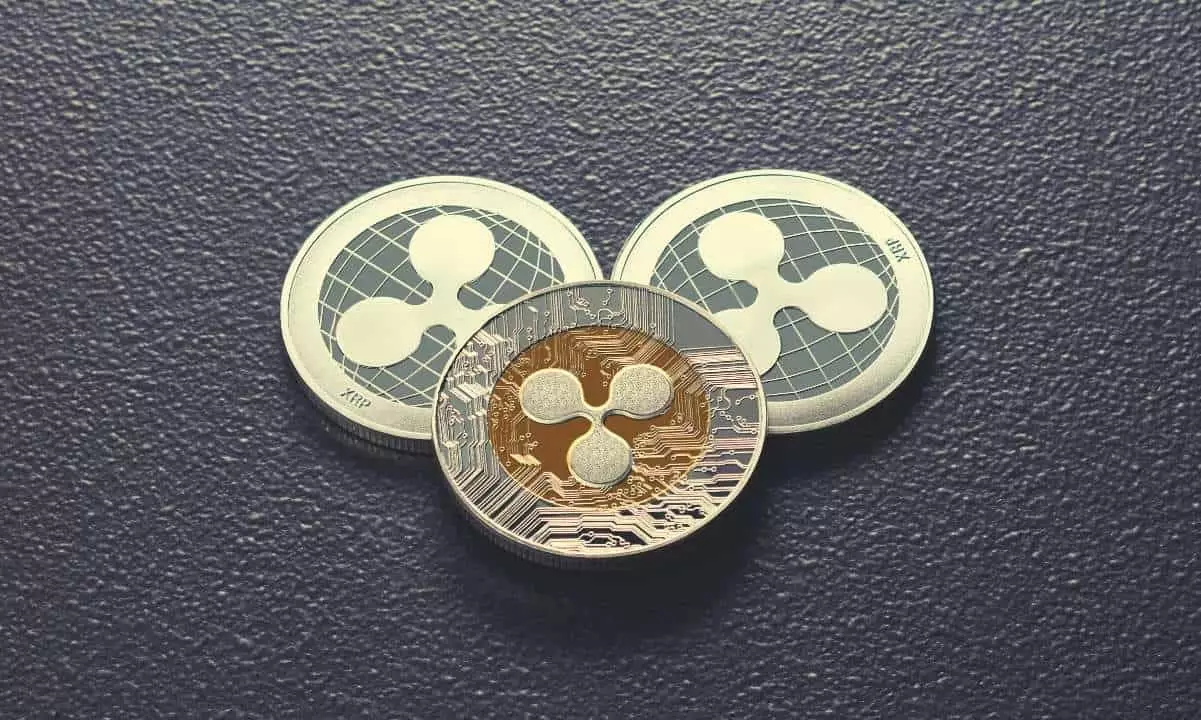The recent introduction of XRP futures on the prestigious Chicago Mercantile Exchange (CME) is a pivotal moment in the cryptocurrency landscape, illustrating both the maturation of the digital assets market and the intricate dance between innovation and regulation. Unlike Bitcoin (BTC) and Ethereum (ETH), which enjoyed enthusiastic receptions amidst roaring bull markets, XRP’s debut is layered with complexity. The cryptocurrency’s launch on a regulated platform is not merely a data point; it’s an indicator of burgeoning institutional acceptance and a test of investor appetite in a market fraught with uncertainty.
The potential for XRP is vast, yet its futures represent a double-edged sword. While institutional involvement signals a degree of legitimacy and mainstream acceptance of cryptocurrencies, XRP’s future trajectory is inherently linked to ongoing regulatory challenges. This juxtaposition sparks questions: Will XRP be able to break free from its past troubles, or will it remain shackled by legal uncertainties? The launch’s performance cannot be merely viewed through the lens of trading volume; it encapsulates broader market sentiment toward both the asset itself and the wider cryptocurrency sector.
Volume Comparisons: Not All Futures Are Born Equal
When juxtaposing the trading volumes of XRP futures with those of Bitcoin and Ethereum, the discrepancies are glaring. In its first day, XRP recorded approximately $19 million in notional trading volume—a respectable figure, yet a far cry from Bitcoin’s whopping $100 million in its debut. Ethereum’s $34 million pales in comparison to Bitcoin yet still reflects a burgeoning interest that XRP must now compete against.
These numbers should not just be seen as metrics of success or failure; they tell a story about market conditions and investor psychology. Bitcoin’s launch in December 2017 captured the fervor of a tiny window of financial enthusiasm, where every cryptocurrency was the talk of the town. Ethereum followed shortly in 2021, with DeFi and NFTs creating a snowball effect of interest. In stark contrast, XRP’s debut is happening in a chaotic market seeking direction, where speculative interest is tempered by caution and skepticism.
The critical question arises: Does the lower volume signal a lack of confidence in XRP specifically, or does it reflect a more cautious market posture? Undoubtedly, XRP’s ongoing legal battle with the U.S. SEC looms ominously over its appeal. Despite the undeniable advancements of the crypto market, such fundamental issues cannot be ignored and have palpable effects on investor sentiment.
Market Ecology: The Role of Competitors
A compelling factor in understanding XRP’s futures performance lies in examining the competitive landscape. Unlike the 2017 Bitcoin launch, which occurred in a comparatively barren crypto derivatives market, XRP enters an entirely different arena. Today, established players like Binance and Coinbase commandeer significant portions of the crypto derivatives ecosystem. These platforms offer alternatives that have already captured the hearts— and wallets— of institutional and retail investors alike.
The crowded market could undermine XRP’s liquidity; institutional participants confined to CME may view alternatives more favorably due to established protocols and familiar frameworks. This competition raises the stakes higher for XRP. The trading environments and incentives present on rival exchanges can significantly stymie XRP’s growth, making it imperative for Ripple and associated stakeholders to strategize rigorously.
This competitive disposition emphasizes that it’s not merely about the derivatives themselves. Institutions will seek robust platforms with predictable regulatory frameworks, and XRP’s market position must fortify itself against more established offerings. The narrative of “XRP vs. the Market” thus extends beyond mere trading volumes; it encapsulates how regulatory clarity and market competitiveness can dictate a digital asset’s long-term viability and acceptance.
In a world increasingly leaning towards digitization, XRP’s entry onto the CME presents an opportunity, but it also serves as a cautionary tale for other cryptocurrencies. The road ahead requires not only engaging with the present challenges but also navigating the broader implications that can arise from regulatory interactions and market dynamics. Whether XRP can evolve into a formidable contender on the futures landscape will depend on its ability to thrive in a nuanced environment replete with both promise and peril.















